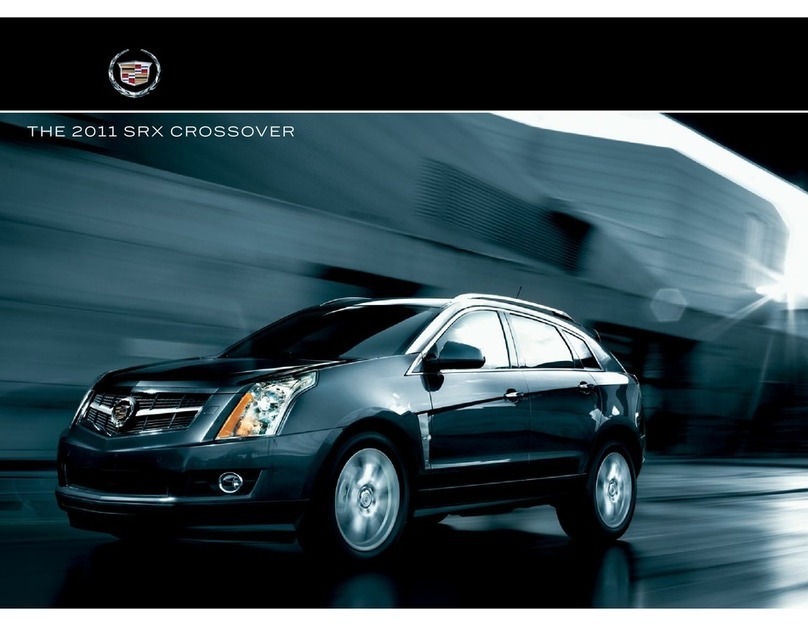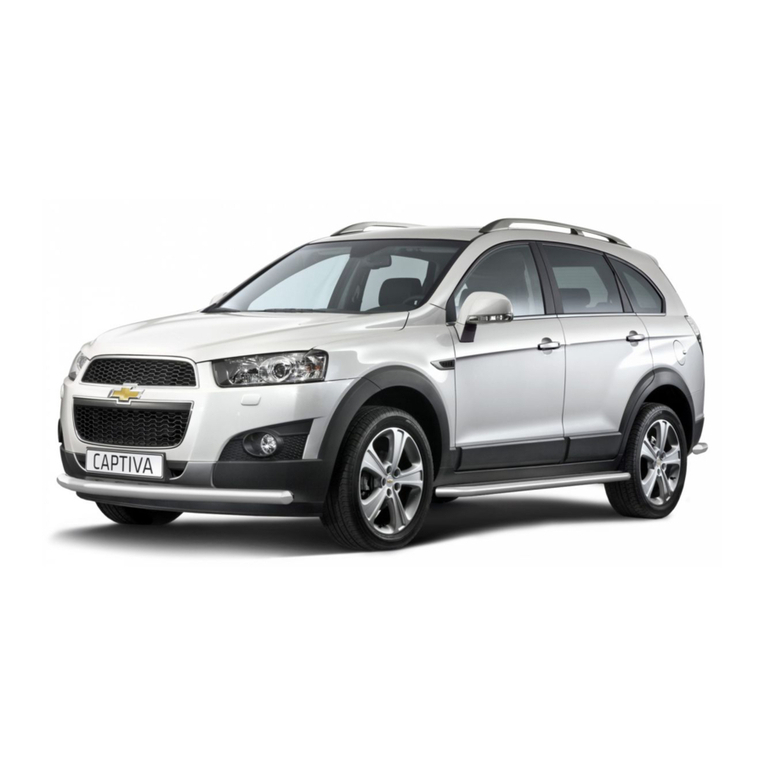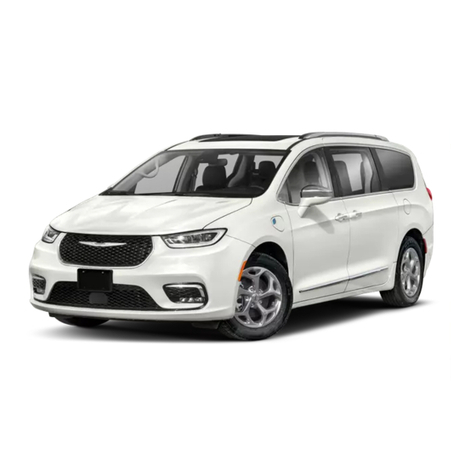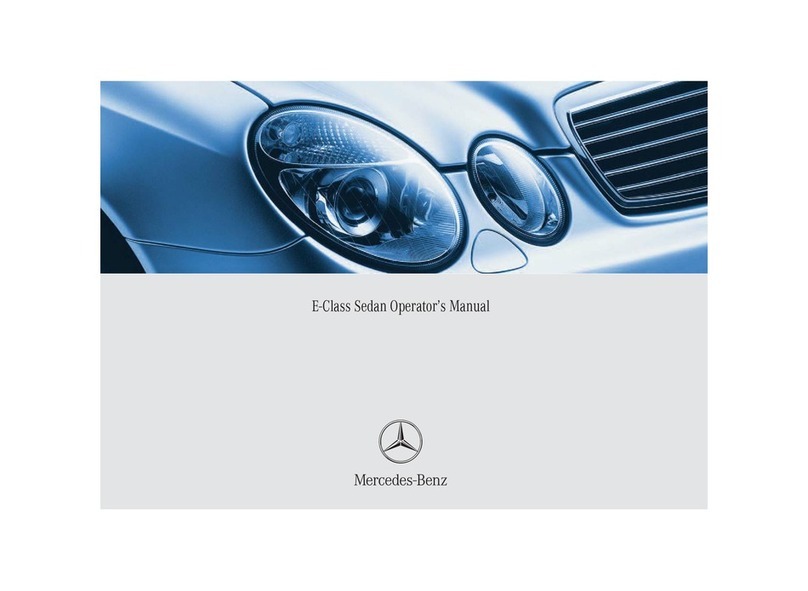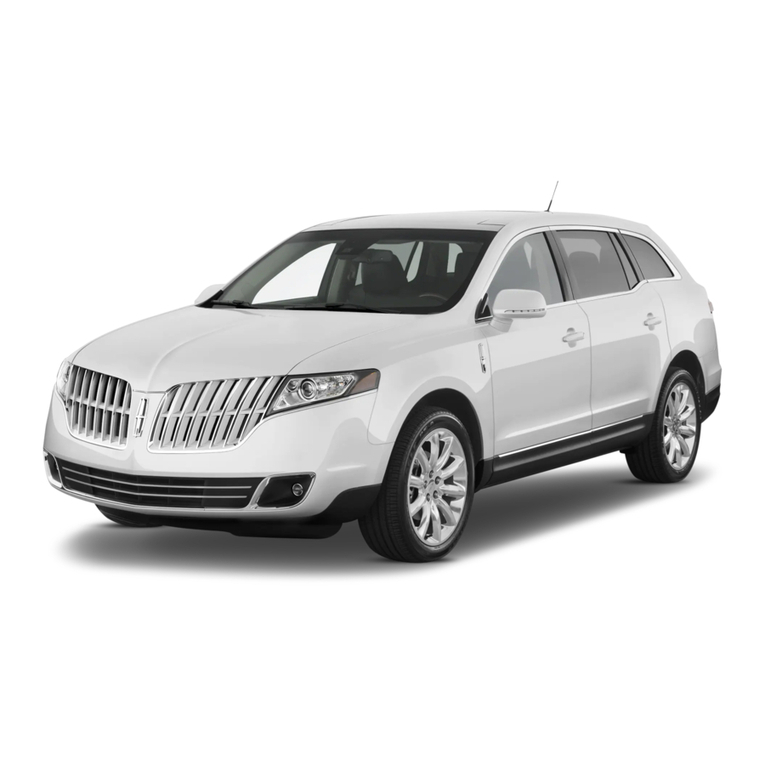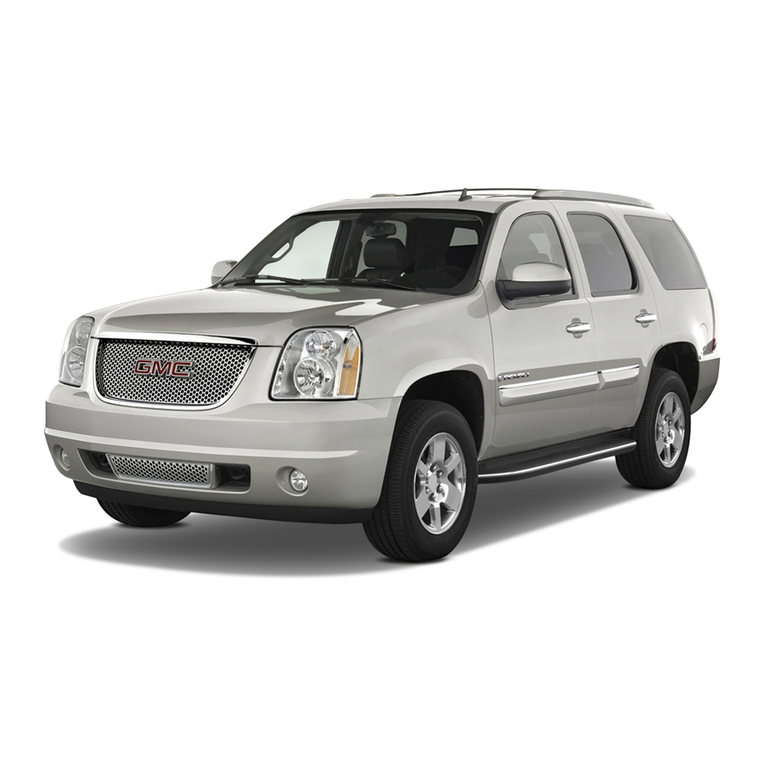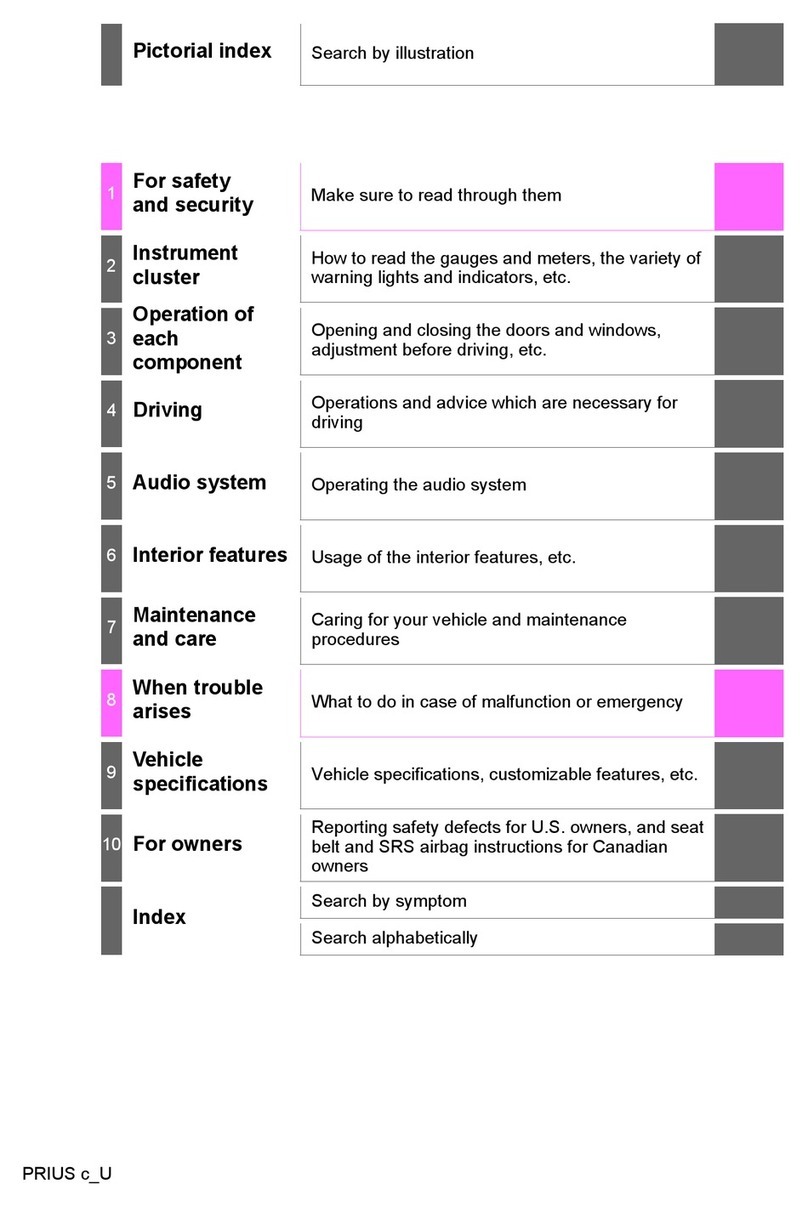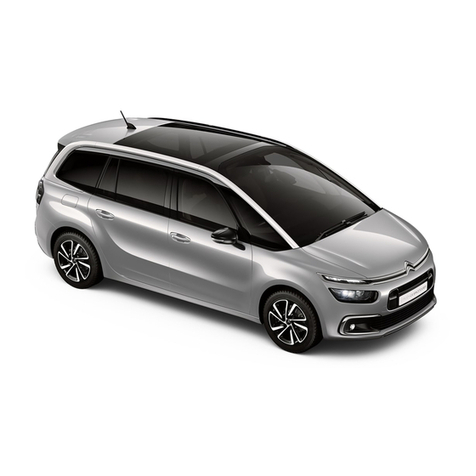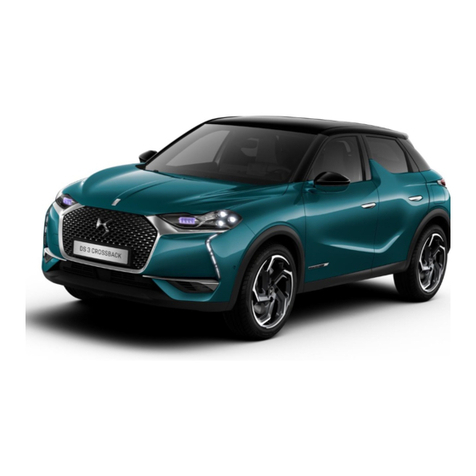BMW iX User guide

Online Edition for Part no. 01405A38CB9 - VI/21

WELCOME TO BMW i.
Owner's Handbook.
Congratulations on your choice of a BMW i.
The better you are acquainted with your vehicle, the easier you will find it is to
operate. We would therefore like to offer you the following advice:
Please read the Owner's Handbook before setting out in your new BMW i.
Also use the integrated Owner's Handbook in your vehicle. It contains impor‐
tant notes on how to operate the car, enabling you to derive maximum benefit
from the technical advantages of your BMW i. It also contains information
which will help you to maintain both the operating safety and road safety of
your BMW i's as well as its full resale value.
When the vehicle leaves the factory, the printed Owner's Handbook is the
most up-to-date version. After a vehicle software update – for example, a Re‐
mote Software Upgrade – the Integrated Owner's Handbook for the vehicle
will contain updated information.
Supplementary information is provided in the other documents of on-board
literature.
We wish you a safe and pleasant journey.
3
Online Edition for Part no. 01405A38CB9 - VI/21

TABLE OF CONTENTS
After a vehicle software update – for example, a Remote Software Up‐
grade – the Integrated Owner's Handbook for the vehicle will contain up‐
dated information.
NOTES
Notes .................................................................................................................................... 6
Safety of the high-voltage system ............................................................................ 21
Owner's Handbook media ........................................................................................... 23
QUICK REFERENCE
Getting in .......................................................................................................................... 26
Adjustment and operation ........................................................................................... 30
On the move ................................................................................................................... 34
CONTROLS
Vehicle cockpit ............................................................................................................... 44
Sensors in the vehicle .................................................................................................. 48
Vehicle operating condition ........................................................................................ 52
iDrive .................................................................................................................................. 55
BMW Remote Software Upgrade ............................................................................. 69
General settings ............................................................................................................. 73
Personal settings ........................................................................................................... 77
Connections .................................................................................................................... 82
Opening and closing ..................................................................................................... 90
Seats, mirrors and steering wheel .......................................................................... 114
Carrying children safely ............................................................................................. 126
Driving ............................................................................................................................. 136
Displays .......................................................................................................................... 153
Lights .............................................................................................................................. 175
Safety .............................................................................................................................. 184
Driving stability control systems .............................................................................. 223
Driver assistance systems ........................................................................................ 227
Parking ............................................................................................................................ 251
Driving comfort ............................................................................................................. 279
4
Online Edition for Part no. 01405A38CB9 - VI/21

Air conditioning ............................................................................................................ 282
Interior equipment ....................................................................................................... 292
Storage compartments .............................................................................................. 301
Luggage compartment .............................................................................................. 304
DRIVING HINTS
Driving precautions ..................................................................................................... 312
Increasing range .......................................................................................................... 317
MOBILITY
Charging vehicle .......................................................................................................... 322
Wheels and tyres ......................................................................................................... 333
Bonnet ............................................................................................................................ 356
Operating fluids ............................................................................................................ 357
Maintenance ................................................................................................................. 359
Replacing parts ............................................................................................................ 362
Help in case of a breakdown .................................................................................... 367
Care ................................................................................................................................. 375
REFERENCE
Technical data .............................................................................................................. 380
Seats for child restraint systems ............................................................................. 382
Appendix ........................................................................................................................ 384
Everything from A to Z ............................................................................................... 396
© 2021 Bayerische Motoren Werke
Aktiengesellschaft
Munich, Germany
Not to be reproduced, wholly or in part, without written permission from BMW AG, Munich.
English ID8 VI/21, -
Printed on environmentally friendly paper, bleached without chlorine, suitable for recycling.
5
Online Edition for Part no. 01405A38CB9 - VI/21

Notes
About this Owner's Handbook
Orientation
The quickest way to find information on a partic‐
ular topic or feature is to consult the alphabetical
index.
We recommend that you read through the first
chapter to obtain an initial overview of the vehi‐
cle.
Validity of Owner's Handbook
Vehicle production
At the time of production in the factory, the prin‐
ted Owner's Handbook provides up-to-date in‐
formation. Updates following the copy deadline
can result in differences between the printed
Owner's Handbook and the integrated Owner's
Handbook in the vehicle.
Notes on updates can be found in the appendix
of the printed Owner's Handbook for the vehicle.
After a software update in the vehicle
After a vehicle software update, for example, via
Remote Software Upgrade, the Integrated Own‐
er's Handbook for the vehicle will contain the lat‐
est information.
Owner's Handbook for Navigation,
Entertainment, Communication
The Owner's Handbook for Navigation, Enter‐
tainment and Communication is available as a
printed book from Service.
These topics are also covered in the integrated
Owner's Handbook in the vehicle.
Additional sources of
information
Service Partner
A Service Partner of the manufacturer will be
happy to answer any further questions.
Internet
Vehicle information and general information on
BMW – on technology, for example – are avail‐
able on the Internet: www.bmw.com.
Integrated Owner's Handbook in the
vehicle
The Integrated Owner's Handbook shows all
standard equipment, national-market equipment
and optional equipment which is offered or will
be offered on a model-specific basis. The
integrated Owner's Handbook can be shown on
the control display.
BMW Driver's Guide App
The BMW Driver's Guide App shows all standard
equipment, national-market equipment and op‐
tional equipment which is offered or will be of‐
fered on a model-specific basis. The app can be
displayed on smartphones and tablets.
BMW Driver's Guide web version
Driver's Guide web version shows all standard
equipment, national-market equipment and op‐
tional equipment which is offered or will be of‐
fered on a model-specific basis. The Driver's
Guide web version can be displayed in any up-
to-date browser.
Seite 6
NOTES Notes
6
Online Edition for Part no. 01405A38CB9 - VI/21

Symbols and displays
Symbols in the Owner's Handbook
Symbol Meaning
Precautions that must be followed in
order to avoid the possibility of injury
to yourself and to others as well as
serious damage to the vehicle.
Measures that can be taken to help
protect the environment.
"..." Texts on a display in the vehicle for
selecting functions.
›...‹ Commands for the voice control
system.
››...‹‹ Replies by the voice control system.
Actions
Actions that need to be carried out are shown as
a numbered list. The list of steps must be carried
out in the specified sequence.
1. First action.
2. Second action.
Lists
Alternative options and lists of items with no im‐
plied sequence are shown as bullet point lists:
▷First option.
▷Second option.
Symbol on components and
assemblies
This symbol on a vehicle component
indicates that further information on the
component is available in the Owner's
Handbook.
The symbols on parts of the vehicle indicate that
life-threatening injury could occur as a result of
electric shock if the high-voltage technology or
the orange-coloured high-voltage components
are used inappropriately.
Vehicle equipment
This Owner's Handbook shows all models and all
standard equipment, national-market equipment
and optional equipment which is offered or will
be offered on a model-specific basis, i.e. in the
model range. As a result, this Owner's Handbook
may also contain descriptions and illustrations of
equipment, systems and functions which are not
installed in the vehicle in question, for example
due to:
▷Selected optional equipment.
▷National-market version or national-market
equipment.
▷Possibility of subsequent enabling and soft‐
ware updates.
This also applies to safety-relevant functions and
systems.
Before starting a journey, check whether a piece
of equipment or a function that is described is
available in the vehicle. Information about
whether a function is currently available in the ve‐
hicle or whether and when the function can be
installed in the vehicle can be obtained from a
Service Partner of the manufacturer or another
qualified Service Partner.
Seite 7
Notes NOTES
7
Online Edition for Part no. 01405A38CB9 - VI/21

If a piece of equipment, system or function is de‐
scribed in the Owner's Handbook, this does not
mean that it will be available in the vehicle.
Please comply with the relevant laws and regula‐
tions when using the corresponding functions
and systems.
If certain equipment and models are not descri‐
bed in this Owner's Handbook, refer to the Sup‐
plementary Owner's Handbooks provided.
In right-hand drive vehicles, some operating ele‐
ments are arranged differently from those shown
in this Owner's Handbook.
Production date
The production date of your vehicle can be
found at the bottom of the door pillar on the driv‐
er's door.
The production date is defined as the calendar
month and the calendar year in which the vehicle
body and the powertrain assemblies are joined
and the vehicle is driven or moved from the pro‐
duction line.
Status of the Owner's
Handbook
General
The high standards of safety and quality that
characterise the vehicles are ensured through
ongoing development. On rare occasions, this
may mean that the features described in this
handbook will vary from those in your vehicle.
For Australia/New Zealand: general
When reading this Owner's Handbook, please
bear the following in mind: to ensure that our ve‐
hicles continue to embody the highest quality
and safety standards, we pursue a policy of con‐
tinuous, ongoing development. Because modifi‐
cations in the design of both vehicles and acces‐
sories may be introduced at any time, your own
vehicle's equipment may vary from that descri‐
bed in this handbook. For the same reason, it is
also impossible to guarantee that all descriptions
will be completely accurate in all respects.
We must therefore request your understanding
of the fact that the manufacturer of your vehicle
is unable to recognise legal claims based on dis‐
crepancies between the data, illustrations and
descriptions in this Owner's Handbook and your
own vehicle's equipment. Please note, too, that
some of the optional equipment described in this
manual is not available on Australian models due
to restrictions imposed by Australian Design
Rules and other requirements.
Should you require any further information,
please contact your Service centre, who will be
pleased to advise you.
Validity of Owner's Handbook
Vehicle production
At the time of production in the factory, the prin‐
ted Owner's Handbook provides up-to-date in‐
formation. Updates following the copy deadline
can result in differences between the printed
Owner's Handbook and the integrated Owner's
Handbook in the vehicle.
Notes on updates can be found in the appendix
of the printed Owner's Handbook for the vehicle.
After a software update in the vehicle
After a vehicle software update, for example, via
Remote Software Upgrade, the Integrated Own‐
er's Handbook for the vehicle will contain the lat‐
est information.
Your own safety
Intended use
Please comply with the following when using the
vehicle:
Seite 8
NOTES Notes
8
Online Edition for Part no. 01405A38CB9 - VI/21

▷Owner's Handbook.
▷Information attached to the vehicle. Do not
remove stickers.
▷Technical data of the vehicle.
▷The applicable laws and safety standards of
the country in which the vehicle is used.
▷Vehicle papers and legal documents.
Warranty
The vehicle is technically designed for the oper‐
ating conditions and approval (homologation) re‐
quirements of the country to which it was first
delivered. If the vehicle is to be driven in another
country, it may need to be adapted beforehand
to any different operating conditions and appro‐
val requirements prevailing in that country. If the
vehicle does not comply with the homologation
requirements in a certain country, no warranty
claims can be lodged there for the vehicle. War‐
ranty claims may also be invalidated if the electri‐
cal system has been modified, for example
through the use of control units, hardware or
software which the vehicle manufacturer classi‐
fies as unsuitable. A Service Partner is able to
provide further information.
Note: in addition to the statutory warranty, the
selling Authorised BMW Retailers or the selling
BMW AG branches in Germany are granting ad‐
ditional benefits with the purchase of new BMW
vehicles within the framework of the BMW War‐
ranty Booklet. More information: www.bmw.de/
qualitaetsbrief.
Maintenance and repairs
The advanced technology used in your vehicle,
for example the state-of-the-art materials and
high-performance electronics, requires appropri‐
ate maintenance and repair methods.
Consequently, the manufacturer of the vehicle
recommends having corresponding work carried
out by a BMW Service Partner. If another BMW
authorised workshop is chosen, BMW recom‐
mends choosing one that performs work, for ex‐
ample maintenance and repair, according to
BMW specifications with properly trained per‐
sonnel. In the Owner's Handbook, facilities of this
kind are referred to as "another qualified Service
Partner or a specialist workshop".
If work such as maintenance and repair is carried
out incorrectly, it could result in consequential
damage with associated safety risks.
Work performed incorrectly on the vehicle paint‐
work can cause components, for example the ra‐
dar sensors, to fail or malfunction, resulting in a
safety risk.
Parts and accessories
BMW recommends using parts and accessories
that are approved by BMW and are therefore
suitable for this purpose.
You are recommended to consult a BMW Serv‐
ice Partner for advice on genuine BMW parts and
accessories, other BMW approved products and
expert advice on all related matters.
The safety and compatibility of these products in
conjunction with BMW vehicles have been
checked by BMW.
BMW accepts product responsibility for genuine
BMW parts and accessories. On the other hand,
BMW cannot accept liability for parts or acces‐
sory products of any kind which it has not ap‐
proved.
BMW is unable to assess each individual product
of outside origin as to its suitability for use on
BMW vehicles without safety risk. Likewise no
guarantee can be be assumed even if the prod‐
uct has been granted official approval in a spe‐
cific country. Tests performed for such approvals
cannot always cover all operating conditions for
BMW vehicles, and some of them therefore are
insufficient.
Seite 9
Notes NOTES
9
Online Edition for Part no. 01405A38CB9 - VI/21

Vehicle data and data
protection
Responsibility and rights
Responsibility for data
Within the scope of data protection directives
and legislation, the manufacturer of the vehicle is
responsible for the processing of personal data
which is collected when the vehicle is used or
from web pages, customer support, online serv‐
ices and marketing campaigns.
Personal identification
Every vehicle has a unique vehicle identification
number. Depending on the country, and with the
assistance of the relevant authorities, the regis‐
tered keeper can be identified from the vehicle
identification number and the number plate.
There are also other ways of tracing data collec‐
ted in the vehicle back to the driver or registered
keeper, for example via the ConnectedDrive ac‐
count used.
Data protection laws
In accordance with current data protection law,
vehicle users have certain rights vis-à-vis the ve‐
hicle manufacturer or companies that collect or
process their personal data.
Vehicle users have a free and comprehensive
right of access to their personal data which has
been collected and held by organisations.
Such organisations could be:
▷Vehicle manufacturer.
▷Qualified Service Partners.
▷Specialist workshops.
▷Service providers.
Vehicle users may request information about
what personal data has been saved, what it is
used for and where it has come from. Proof of
ownership or use is required in order to obtain
this information.
The right of access also extends to information
about data that has been transferred to other
companies or bodies.
Please refer to the vehicle manufacturer's web
page for the applicable data protection policy.
This data protection policy contains information
about the right to have data deleted or corrected.
The vehicle manufacturer's website also pro‐
vides its contact details and those of its data pro‐
tection officer.
The registered keeper can have the data stored
in the vehicle read out by a Service Partner of the
manufacturer or another qualified Service Partner
or a specialist workshop, on payment of a fee
where applicable.
The legally required OBD diagnostic socket in
the vehicle is used to read out the vehicle data.
Data processing
The collection of personal data may be neces‐
sary to enable the manufacturer of the vehicle to
fulfil obligations to the customer or legislator or
to offer high-quality products and services.
These include, for example:
▷To fulfill contractual obligations regarding the
sale, servicing and repair of vehicles, for ex‐
ample sales processes, maintenance.
▷To fulfill contractual obligations regarding the
provision of digital vehicle services, for exam‐
ple BMW ConnectedDrive.
▷To safeguard product quality and the re‐
search and development of new products,
and to optimise service processes.
▷To perform sales, service and administration
processes, including branches and National
Sales Companies.
▷To provide customer support, for example
contract processing.
▷To conduct advertising communication and
market research on the basis of personal
consent.
Seite 10
NOTES Notes
10
Online Edition for Part no. 01405A38CB9 - VI/21

▷To fulfill legal obligations, for example infor‐
mation regarding Technical Campaigns.
▷To process warranty claims.
Data collection
Type of data collected
Depending on the situation, the following per‐
sonal data may be collected.
Contact details
Name, address, phone number, email address.
Personal data
▷Personal information provided by customers,
for example date of birth, education, house‐
hold size or occupation.
▷Data to determine identity, for example driv‐
er's licence.
Contract data
▷Customer number, contract number, booked
online services.
▷Stored payment information, for example
credit card number.
Credit rating
▷Information about transactions.
▷Information about fraud or criminal offences.
Interests
Information provided by the customer regarding
areas of interest, for example product preferen‐
ces, hobbies and other personal preferences.
Use of web pages and communication
▷Information on how web pages are used and
whether messages are opened or forwarded.
▷Account information regarding online serv‐
ices, customer portals and prospective cus‐
tomer portals.
Transaction and interaction data
Information on the purchasing of products and
services, interactions with customer support and
participation in market research studies.
Use of apps and services of the vehicle
manufacturer
Information on the use of apps on mobile devi‐
ces and online services.
Information on vehicle functions and settings
Information on functions and settings in the vehi‐
cle, for example when using online services.
Vehicle-related sensor data and usage data
Data which is generated and/or processed in the
vehicle.
▷Driver assistance systems: processing of
sensor data which is used to evaluate the ve‐
hicle's surroundings or the driver's behaviour.
▷Personal settings: settings saved in the vehi‐
cle profile, for example seat setting.
▷Multimedia, navigation, for example destina‐
tions.
Time of data collection
Personal data may be collected at the following
times:
▷When the customer makes direct contact
with the manufacturer of the vehicle, for ex‐
ample via the web page.
▷When requesting information on products
and services or direct purchases, for example
on web pages or in apps.
▷When making direct purchases, for example
on the web page.
▷When purchasing services directly, for exam‐
ple online services.
▷When the customer responds to direct mar‐
keting activities, for example when personal
data is provided.
Seite 11
Notes NOTES
11
Online Edition for Part no. 01405A38CB9 - VI/21

▷When using vehicles, products, services and
digital offers, for example web pages, apps.
▷When communicating personal data through
qualified partners of the vehicle manufacturer
or through third-party providers, provided that
data protection requirements are met.
▷When providing personal data through certi‐
fied address providers, provided that data
protection requirements are met.
▷When vehicle data, including the vehicle iden‐
tification number, is read out during service,
maintenance and repair activities.
Data in the vehicle
General
A number of electronic control devices are instal‐
led in your vehicle. Electronic control units proc‐
ess data that they receive from vehicle sensors,
generate themselves or exchange with one an‐
other, for example. Many of the control units are
necessary for safe operation of the vehicle, or
provide assistance during a journey, for example
driver assistance systems. There are also control
devices which manage comfort or infotainment
functions.
Data saved in the vehicle can be deleted at any
time. This data is only transmitted to third parties
if expressly requested in the course of using on‐
line services. The transfer depends on the set‐
tings selected for using the services.
Sensor data
Driver assistance systems, for example Active
Cruise Control, Collision Warning or Attentive‐
ness Assistant, process sensor data which is
used to evaluate the vehicle's surroundings or
the driver's behaviour.
These include, for example:
▷Status messages relating to the vehicle and
its individual components, for example wheel
speed, wheel circumferential velocity, decel‐
eration, lateral acceleration, fastened seat
belts.
▷Ambient conditions, for example temperature,
rain sensor signals.
The data is processed within the vehicle and is
usually transient. It is only saved for longer than
the operating period if it is required in order to
provide services agreed with the customer.
Electronic components
Electronic components, for example control devi‐
ces and vehicle keys, contain components for
storing technical information. Information about
the vehicle condition, component use and wear,
maintenance requirements, events or faults can
be stored temporarily or permanently.
This information generally documents the condi‐
tion of a component, a module, a system or the
vehicle's surroundings, including:
▷Operating states of system components, for
example fill levels, tyre inflation pressure, bat‐
tery status.
▷Malfunctions and faults of important system
components, for example lights and brakes.
▷Responses of the vehicle to particular driving
situations, for example triggering of an airbag,
activation of the driving stability control sys‐
tems.
▷Information on vehicle-damaging events.
The data is required so that the control units can
perform their functions. It is also used for detect‐
ing and rectifying malfunctions, as well as to opti‐
mise vehicle functions.
Most of this data is transient and is only pro‐
cessed within the vehicle itself. Only a small pro‐
portion of the data is stored in event or fault
memories in response to specific circumstances.
Personal settings
Convenience functions, such as seat, climate or
light settings, enhance the driving experience.
The personal settings for these functions can be
saved in a profile within the vehicle and retrieved
Seite 12
NOTES Notes
12
Online Edition for Part no. 01405A38CB9 - VI/21

as required, for example if the settings have been
changed in the meantime by another driver. De‐
pending on the equipment, these profiles can be
saved in the vehicle manufacturer's secure data
systems. When the driver changes vehicle, these
saved profiles can simply be applied to a differ‐
ent vehicle.
The vehicle settings saved in the vehicle profile
can be changed or deleted at any time.
Multimedia and navigation
Data can also be imported into the vehicle enter‐
tainment and communication system, for exam‐
ple via a smartphone or MP3 player. The impor‐
ted data can be processed within the vehicle, for
example to play the user's favourite music.
Depending on the equipment, this data includes:
▷Multimedia data such as music, films or pho‐
tos for playback in an integrated multimedia
system.
▷Address book data for use in conjunction with
an integrated hands-free system or an
integrated navigation system.
▷Destinations: depending on the equipment,
route guidance can be started automatically
using destinations learned by the navigation
system.
▷Data on usage of Internet services.
This data may be saved locally in the vehicle or
stored on a device that has been connected to
the vehicle, for example a smartphone, USB stick
or MP3 player.
Service data
General
When services are required, for example repairs,
service operations, warranty work and quality as‐
surance measures, this technical information can
be read out from the vehicle together with the
vehicle identification number.
Stored data
Electronic vehicle components may contain data
storage medium which store technical informa‐
tion relating to the vehicle condition, events and
faults. The data required for service measures is
processed locally and is deleted automatically
once the work is complete. A Service Partner of
the manufacturer or another qualified Service
Partner or a specialist workshop can read out the
information. As part of service and repair work,
data is read out via the OBD diagnostic socket
using special diagnosis systems and transferred
to the vehicle manufacturer. The customer is en‐
titled to withhold consent to the data being read
out and forwarded.
Optimising service processes
The vehicle manufacturer maintains documenta‐
tion relating to each vehicle to ensure the best
possible service is provided. Within the scope of
legal requirements, this documentation may be
made available to authorised third parties, for ex‐
ample specialist workshops.
The authorised third parties may only use this
data for the purposes of performing the service
or repair order in question. This prevents work
from being duplicated unnecessarily on the vehi‐
cle, for example.
Ensuring product quality
The data logs the technical conditions of the ve‐
hicle and helps in locating faults, complying with
warranty obligations and improving quality.
To ensure product quality and the development
of new products, data on the usage of individual
components and systems, for example, lights,
brake, electric windows, displays, can be read
out. This data helps the vehicle manufacturer to
optimise the design of components and sys‐
tems. Data analysis also provides the basis for
Technical Campaigns and statutory recalls.
Furthermore, the manufacturer has product
monitoring obligations to meet in line with prod‐
uct liability law. To fulfil these obligations, the ve‐
Seite 13
Notes NOTES
13
Online Edition for Part no. 01405A38CB9 - VI/21

hicle manufacturer requires technical data from
the vehicle.
Goodwill and warranty claims
Data from the vehicle can also be used to check
customer warranty claims. If goodwill or warranty
claims are asserted, the data is read out and
transferred to the vehicle manufacturer to re‐
solve the claims promptly.
Fault and event memories in the vehicle can be
reset when a Service Partner of the manufacturer
or another qualified Service Partner or a special‐
ist workshop performs repair or servicing work.
Control over data
The transfer of data to the vehicle manufacturer
for the purposes of ensuring product quality or
optimising service processes can be stopped on
request.
Legal requirements regarding data
disclosure
According to current law, the vehicle manufac‐
turer is obliged to provide the authorities with any
data it has stored. Data is provided to the extent
required and on a case-by-case basis, for exam‐
ple to investigate a criminal offence.
The current law also gives state bodies authori‐
sation to read out data from the vehicle them‐
selves for individual cases. This could include
reading out data from the airbag control unit to
shed light on the circumstances of an accident,
for example.
As part of statutory obligations within the EU cer‐
tain vehicle consumption data, so-called OBFCM
data, is sent to the EU Commission via the vehi‐
cle manufacturer, e.g. fuel or energy consump‐
tion and distance covered. The registered keeper
may refuse to provide this data for this purpose.
Mobile devices
Depending on the equipment, mobile devices
such as smartphones can be connected to the
vehicle and used to control vehicle functions, for
example BMW Connected, Apple CarPlay.
Sound and images from the mobile device may
be played back or displayed through the multi‐
media system in the vehicle, for example.
Selected information is transferred to the mobile
device at the same time. Depending on the type
of integration, this includes position data and
other general vehicle information, for example.
This enables optimum use of selected apps, for
example navigation and music playback. How the
data is processed further is determined by the
provider of the particular app being used.
Services
General
If the vehicle has a wireless network connection,
data can be exchanged between the vehicle and
other systems, for example with BMW Connec‐
tedDrive.
Services from the vehicle manufacturer
The various functions of online services provided
by the vehicle manufacturer are described at ap‐
propriate points, for example in the Owner's
Handbook or on the manufacturer's web page.
The relevant legal information pertaining to data
protection is also given.
Personal data may be used to provide online
services. Data is exchanged over a secure con‐
nection, for example with the vehicle manufactur‐
er's data systems set up for this purpose.
Any collection, processing and use of personal
data above and beyond that needed to provide
the services always requires legal permission, a
contractual agreement or consent of the user.
BMW ConnectedDrive
BMW ConnectedDrive networks the vehicle with
a number of digital services. When these serv‐
ices are used, only the data stored in the vehicle
and required to provide the service is transferred
online, for example information on identifying and
Seite 14
NOTES Notes
14
Online Edition for Part no. 01405A38CB9 - VI/21

locating the vehicle. Usage is based on a con‐
tractual agreement with the user.
In individual cases, the transfer of data is trig‐
gered as a result of predefined events, such as
an intelligent emergency call. The wireless net‐
work connection is established via an in-vehicle
transmitter and receiver unit or via personal mo‐
bile devices brought into the vehicle, for example
smartphones. Data transfer can be deactivated
on request.
The wireless network connection enables online
functions to be used. These include online serv‐
ices and apps supplied by the vehicle manufac‐
turer or by other providers.
Services from other providers
When using online services from other providers,
these services are the responsibility of the rele‐
vant provider and subject to their data protection
conditions and terms of use. The vehicle manu‐
facturer has no influence over the data that is ex‐
changed.
Information as to how personal data is collected
and used in relation to services from third parties,
the scope of such data and its purpose, can be
obtained from the relevant provider.
Personal decision
Every user decides for themselves whether they
wish to enter into a contract for a service such as
BMW ConnectedDrive. Information on the extent
of data processing and the content involved is
provided in writing before the service is acquired
and forms part of the vehicle handover.
The user has the option to deactivate the serv‐
ices at any time and consequently to stop the
data processing required for the services. It is
also possible to have the entire data connection
activated or deactivated. Excluded from this are
functions and services which are required by law,
for example emergency call systems.
Transparency concerning vehicle data
BMW CarData provides transparency in handling
vehicle data with the use of BMW Connected‐
Drive. BMW CarData enables users to control
whether vehicle data being processed in the
context of BMW ConnectedDrive is transferred
to third parties. Users can decide for each indi‐
vidual service offering whether data access is to
be granted or refused to third parties, for exam‐
ple to insurance companies.
An archive can also be requested from BMW
CarData at any time. The archive provides infor‐
mation on the data that has been transmitted
and saved in the context of BMW Connected‐
Drive. BMW CarData can only be accessed by
third-party providers via the vehicle manufactur‐
er's servers. Direct access to the vehicle and its
data is not permitted.
More information on BMW CarData is available
on the BMW ConnectedDrive customer portal.
Statutory emergency call system
Principle
The eCall emergency call system required by law
enables manual or automatic emergency calls to
be made, for example in the event of an accident.
The emergency calls are answered by the public
rescue coordination centre.
General
For information on the eCall statutory on-board
emergency call system based on the 112 emer‐
gency call, as well as its operation and its func‐
tions, see the chapter on emergency calls.
The eCall service based on the 112 emergency
call is a public service of general interest and is
provided free of charge.
If a serious accident occurs, the eCall statutory
emergency call system is activated automatically
by on-board sensors as standard practice. It is
also triggered automatically if the vehicle is
equipped with an intelligent emergency call sys‐
Seite 15
Notes NOTES
15
Online Edition for Part no. 01405A38CB9 - VI/21

tem that fails to work in the event of a serious ac‐
cident.
The eCall statutory emergency call system can
also be triggered manually if required.
If a critical system failure occurs that would put
the eCall statutory emergency call system out of
operation, the vehicle occupants receive a warn‐
ing.
For further information:
▷Emergency call, see page 369.
▷Malfunction, see page 370.
Information on data processing
The eCall statutory emergency call system pro‐
cesses personal data in accordance with the
following regulations:
▷Protection of personal data: regulation
2016/679/EU of the European Parliament
and of the Council.
▷Protection of personal data: directive
2002/58/EC of the European Parliament and
of the Council.
Personal data is only processed for the purpose
of transmitting eCall emergency calls to the sin‐
gle European emergency call number 112.
SIM card
The eCall statutory emergency call system oper‐
ates via mobile radio through the SIM card instal‐
led in the vehicle. The SIM card is not perma‐
nently connected to the mobile phone network;
rather, it remains connected only as long as the
emergency call is active.
Data types and their recipients
The eCall statutory emergency call system may
only collect and process the following data:
▷The vehicle identification number for rapidly
identifying the vehicle, for example the model.
▷Vehicle type, for example passenger car.
▷Type of vehicle drive, for example petrol or
diesel, for assessing the risks involved in a
rescue, for example the risk of fire caused by
fuel.
▷The vehicle's position at the time of the acci‐
dent, its last three locations and the direction
of travel in order to locate the vehicle more
quickly on very complex route sections, for
example.
▷A log of the automatic system activation,
along with the time stamp.
▷Control information, which tells rescue serv‐
ices whether the emergency call was trig‐
gered automatically or manually, for example.
▷A time stamp for determining the time of the
accident in order to optimise the deployment
plans of the rescue services.
▷The direction of travel for establishing which
side of the carriageway is affected, for exam‐
ple.
The authorities of the state in whose territory the
eCall system emergency call is made determine
which emergency call centres receive and proc‐
ess the statutory emergency call.
Data processing configuration
The eCall statutory emergency call system en‐
sures that the data contained in the system
memory cannot be accessed outside the system
before an emergency call is triggered.
The data collected for the eCall statutory emer‐
gency call system is only saved in the vehicle
and sent to the rescue coordination centre when
an emergency call is triggered.
The eCall statutory emergency call system en‐
sures that it cannot be traced and there is no
permanent tracking during normal operation.
The eCall statutory emergency call system en‐
sures that the data in the internal system mem‐
ory is deleted automatically and continuously.
The vehicle's location data is continuously over‐
written in the system's internal memory so that
only the vehicle's last three locations - which the
system needs for normal operation - are ever
stored.
Seite 16
NOTES Notes
16
Online Edition for Part no. 01405A38CB9 - VI/21

The activity data log of the eCall statutory emer‐
gency call system is retained only for as long as
is necessary to handle the eCall emergency call
and under no circumstances for any longer than
13 hours after the eCall emergency call was trig‐
gered.
Rights of individuals affected by data
processing
The individual affected by data processing, for
example the registered keeper, has the right to
access the data and can request that data con‐
cerning him or her that is not processed in ac‐
cordance with the statutory regulations be cor‐
rected, deleted or blocked as applicable. Each
time that data is corrected, deleted or blocked in
line with these regulations, the third parties to
whom the data was transmitted must be notified,
insofar as this is reasonably practical.
The individual affected by data processing has
the right to complain to the relevant data protec‐
tion body if he or she believes that his or her
rights have been violated as a result of having
their personal data processed.
For matters relating to access rights, please con‐
tact a Service Partner of the manufacturer or an‐
other qualified Service Partner or a specialist
workshop.
Intelligent emergency call system
Principle
The intelligent emergency call system enables
manual or automatic emergency calls to be
placed, for example in the event of an accident.
The emergency calls are answered by an emer‐
gency call centre appointed by the vehicle manu‐
facturer.
In addition to the intelligent emergency call sys‐
tem, the eCall statutory emergency call system is
present in the vehicle and is active depending on
the situation.
The registered keeper has the right to use either
the intelligent emergency call system or the eCall
statutory emergency call system.
For further information:
Emergency call, see page 369.
Legal basis
The intelligent emergency call system processes
personal data in accordance with the following
regulations:
▷Protection of personal data: directive
95/46/EC of the European Parliament and of
the Council.
▷Protection of personal data: directive
2002/58/EC of the European Parliament and
of the Council.
The ConnectedDrive contract concluded for this
function, as well as the relevant laws, ordinances
and directives of the European Parliament and
the European Council provide the legal basis for
the activation and function of the intelligent
emergency call system.
The relevant ordinances and directives govern
the protection of individuals in terms of process‐
ing personal data.
The intelligent emergency call system processes
personal data in accordance with European di‐
rectives on the protection of personal data.
The intelligent emergency call system processes
personal data only with the registered keeper's
consent.
The intelligent emergency call system and other
added-value services may only process personal
data with the express consent of the individual
affected by data processing, for example the reg‐
istered keeper.
SIM card
The intelligent emergency call system operates
via mobile radio through the SIM card installed in
the vehicle. The SIM card is permanently logged
into the mobile phone network so a connection
setup can be established quickly. The data is
Seite 17
Notes NOTES
17
Online Edition for Part no. 01405A38CB9 - VI/21

sent to the vehicle manufacturer in the event of
an emergency.
Improving quality
The vehicle manufacturer also uses the data sent
as part of an emergency call to improve product
and service quality.
Position determination
Only the provider of the mobile phone network is
able to determine the position of the vehicle
based on mobile phone mast locations. The net‐
work operator is not able to link the vehicle iden‐
tification number to the phone number of the in‐
stalled SIM card. Only the vehicle manufacturer
is able to link the vehicle identification number to
the phone number of the installed SIM card.
Log data for emergency calls
The log data for emergency calls is saved in a
vehicle memory. The oldest log data is regularly
deleted. The log data includes information on
when and where an emergency call was placed,
for example in the event of an accident.
In exceptional cases, the log data can be read out
from the vehicle memory. The log data is usually
read out only if a court order has been issued
and is only possible when the relevant devices
are connected directly to the vehicle.
Automatic emergency call
The system has been designed so that an emer‐
gency call is triggered automatically when an ac‐
cident of a certain severity occurs and is detec‐
ted by the sensors in the vehicle.
Sent information
If an emergency call is made by the intelligent
emergency call system, the same information is
conveyed to the appointed emergency call cen‐
tre as is normally conveyed to the public rescue
coordination centre by the eCall statutory emer‐
gency call system.
Furthermore, the intelligent emergency call sys‐
tem also conveys the following additional infor‐
mation to an emergency call centre appointed by
the vehicle manufacturer and, where applicable,
to the public rescue coordination centre:
▷Accident data, for example the direction of
the collision as detected by the vehicle sen‐
sors in order to assist the rescue services in
their deployment plans.
▷Contact data, for example the phone number
of the installed SIM card and the driver's
phone number, if available, so that those in‐
volved in the accident can be contacted
quickly if necessary.
Data storage
The data relating to a placed emergency call is
saved in the vehicle. The data contains informa‐
tion about the emergency call, for example the
place and time it was made.
The emergency call centre saves audio record‐
ings of the emergency call.
Audio recordings of the customer are saved for
24 hours, in case details of the emergency call
need to be analysed. After that, the audio record‐
ings are deleted. Audio recordings of the emer‐
gency call centre employee are saved for
24 hours for quality assurance purposes.
Disclosure of personal data
The data obtained in the context of an intelligent
emergency call is only used to process the
emergency call. If legally obliged to do so, the ve‐
hicle manufacturer will disclose the data it has
processed and, where applicable, still has saved.
Statutory emergency call system
The owner of a vehicle equipped with an intelli‐
gent emergency call system and the eCall statu‐
tory emergency call system is entitled to use the
on-board eCall system instead of the intelligent
emergency call function.
Seite 18
NOTES Notes
18
Online Edition for Part no. 01405A38CB9 - VI/21

To request deactivation, please contact a Serv‐
ice Partner of the manufacturer or another quali‐
fied Service Partner or a specialist workshop.
The eCall statutory emergency call system is al‐
ways on standby in addition to the intelligent
emergency call system. The eCall statutory
emergency call system takes over the emer‐
gency call function if the intelligent emergency
call system is not operational for technical rea‐
sons, for example if the emergency call centre
appointed by the vehicle manufacturer cannot be
reached.
The eCall statutory emergency call system uses
the infrastructure of the 112 public emergency
call number.
The system can be configured so that emer‐
gency calls are always made via the eCall statu‐
tory emergency call system and not via the intel‐
ligent emergency call system. Have the setting
configured by a Service Partner of the manufac‐
turer or another qualified Service Partner or a
specialist workshop.
Vehicle identification number
General
Depending on the national-market equipment,
the vehicle identification number is located at dif‐
ferent positions in the vehicle. This chapter de‐
scribes all the positions that are possible for the
model range.
Under the bonnet
The vehicle identification number is engraved
under the bonnet, on the right-hand side of vehi‐
cle.
The bonnet must only be opened by a manufac‐
turer Service Partner or another qualified Service
Partner or specialist workshop.
Safety note
WARNING
Work performed incorrectly under the bonnet
can damage components and lead to a safety
risk. There is a risk of accident or material dam‐
age. Have work under the bonnet carried out by
a Service Partner of the manufacturer or an‐
other qualified Service Partner or a specialist
workshop.
Opening bonnet
To open the bonnet, proceed as follows:
1. Remove the wire loop out of the opening of
the instrument panel.
2. Pull on the wire loop. Left bonnet lock is un‐
locked.
3. Repeat on the right side of the vehicle.
4. The bonnet is now unlocked and can be
opened.
Seite 19
Notes NOTES
19
Online Edition for Part no. 01405A38CB9 - VI/21

Type plate on right-hand side
The vehicle identification number is on the type
plate on the right-hand side of vehicle.
Type plate on left-hand side
The vehicle identification number is on the type
plate on the left-hand side of vehicle.
Windscreen
The vehicle identification number is additionally
located behind the windscreen.
iDrive
It is also possible to display the vehicle identifica‐
tion number via iDrive.
1. "MENU"
2. "All apps"
3. "Device manager"
4. "Settings"
5. "Vehicle ID (VIN):"
Seite 20
NOTES Notes
20
Online Edition for Part no. 01405A38CB9 - VI/21
Other manuals for iX
1
This manual suits for next models
1
Table of contents
Other BMW Automobile manuals

BMW
BMW 530 GRAN TURISMO - 2009 User manual

BMW
BMW M6 convertible 2012 User manual
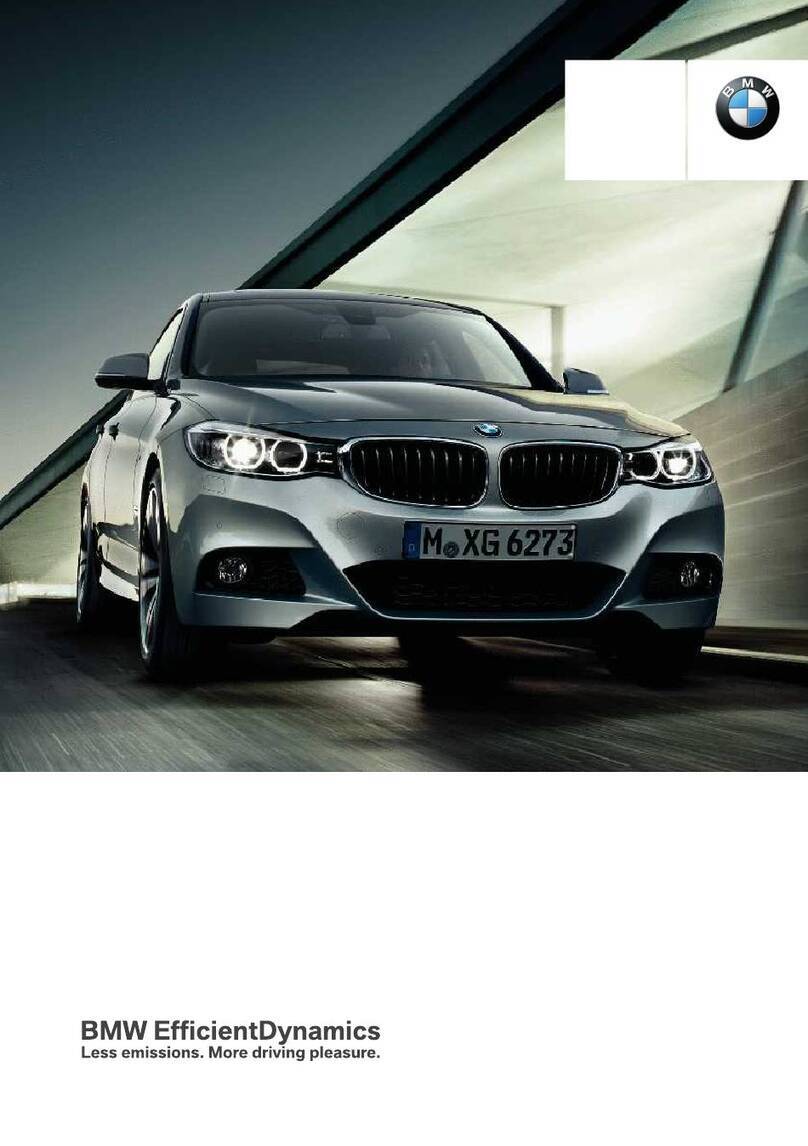
BMW
BMW GRAN TURISMO 3 Series 2013 User manual

BMW
BMW 1984 325e/318i Programming manual

BMW
BMW iX User manual

BMW
BMW SERIE 3 COUPE 2000 User manual

BMW
BMW 4 series User manual
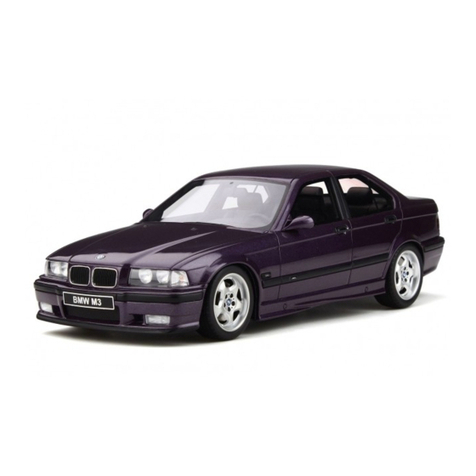
BMW
BMW E36 Programming manual

BMW
BMW 128I User manual

BMW
BMW 1995 525i Programming manual

BMW
BMW 2009 Z4 User manual

BMW
BMW SERIE 7 2000 User manual

BMW
BMW 2008 Z4 User manual

BMW
BMW 2006 328i User manual
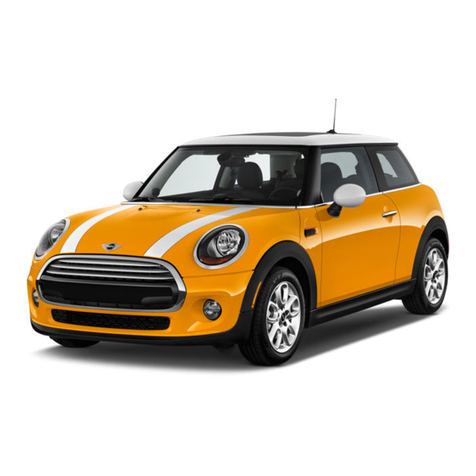
BMW
BMW MINI 2018 Guide

BMW
BMW 2009 328 User manual

BMW
BMW X5 3.0i 2001 Instruction Manual

BMW
BMW 535I User manual

BMW
BMW 325 1986 Programming manual

BMW
BMW 2010 ActiveHybrid X6 Instruction Manual





